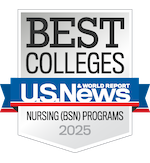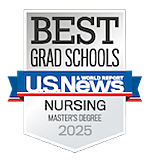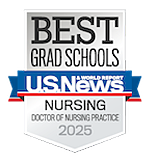Changing the Innovation Conversation
Innovation is often accompanied by thoughts of venture capitalists, “Shark Tanks” and Silicon Valley startups. In the health care field, nurses are often overlooked as innovators — even among themselves. But at the University of Michigan School of Nursing, the Healthcare Innovation Impact Program (HiiP) can provide a pathway to a different perspective.
“Innovation is usually carried out by those who are deeply immersed in their work — the people who are in the trenches,” said Dean Patricia Hurn, Ph.D., RN. “That’s why nurses are so primed to be innovators. They are in the center of the action for every part of health care.” Hurn joined the School of Nursing in 2016 after serving as vice chancellor for research and innovation at the University of Texas System. She believes scientists and researchers have a moral obligation to return their knowledge to serve the public, and she saw opportunity at U-M. She put out a call to the U-M School of Nursing community and found a number of impactful ideas but little understanding of just how to move them forward.
“I felt we needed something to bridge the more tech-driven, commercially focused resources at the university with the U-M School of Nursing ethos,” she said. “If we’re talking about social entrepreneurship to advance the health of patients and communities, we need to do it here.”
Is there really a need for an innovation program tailored to nursing? And what does that look like? Associate Professor Olga Yakusheva, Ph.D., was called upon to answer those questions and sought help from marketing research expert and innovation consultant Ann Fitzsimons to form a task force and lay the groundwork. The demand was noticeable. The task force engaged more than a dozen innovators with projects at different stages of development, but they found that existing resources were too standardized.
“There were a lot of places on campus to turn for help, but they didn’t fit nursing ideas,” said Yakusheva. “If you’re not developing a new device, app or other technology, it’s not as simple.” The group knew they had to do something different from their counterparts at U-M and other institutions. They had to create a new model, focused on the individual needs and ambitions of nursing innovators. “Many of the ideas we’re working on are focused on a social impact for the public good,” said Yakusheva. “You can’t always monetize things that improve patient care and save lives, but what’s more valuable than that?”
To lead a team of innovative nurses, the program had to be their coach. HiiP is designed to be a comprehensive innovation support system that helps nurses do the legwork on customer discovery, market analysis, licensing, promotion
and more. They also connect innovators with outside resources and help nurses build their own entrepreneurial networks.
“This isn’t a process where you make a pitch and are either accepted or rejected,” Yakusheva said. “Our approach to each innovator is different, so if you don’t want to commercialize your product, then we won’t go that route. But whether it’s a new product, process improvement or a pedagogical innovation, there is always an end goal in mind, and that’s what we focus on.”
Since HiiP officially launched in September 2019, excitement around innovation is building at the U-M School of Nursing. As the program adds to the growing list of innovators and projects under its guidance, the campus community is starting to take notice as well. In December, the U-M School of Nursing hosted the universitywide Innovation and Entrepreneurship roundtable for the first time.
While the program has largely focused on faculty innovation, helping students leverage HiiP support to advance their own ideas will be key to long-term success.
“How far we can go is going to be driven by how we engage our students,” Hurn explained. “Given the resources and coaching they need, we can create avenues for Michigan nurses to make giant leaps.”
Measuring success can be difficult, however, when you’re not focused on revenue, commercialization and more traditional metrics. But with an uncommon approach, HiiP is helping nurses realize the true potential of their ideas.
“Ingenuity, compassion and service are embedded within the nursing profession, and that is where innovation comes from,” said Yakusheva. “We want nurses to take credit for this. So when people outside of our community recognize us as a champion for nursing innovation, that is a success.”





